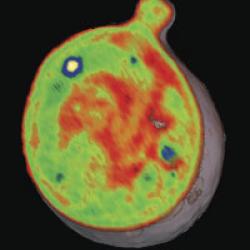Source Institutions
Source Institutions
Add to list Go to activity
Activity link broken? See if it's at the internet archive

In this life science activity (page 8 of the PDF), learners explore the carbon cycle by mixing yeast, sugar and water. Learners observe how different quantities of the mixture produce more or less carbon dioxide, created when micro-organisms in the yeast "eat" (break down) the sugar. The experiment also requires learners to calculate volume, and so can be used as a math activity as well. Although this was created as a post-visit activity for a workshop about sugar and nutrition, it also makes an excellent stand-alone activity.
- 10 to 30 minutes
- 1 to 2 hours
- Over $20 per group of students
- Ages 8 - 14
- Activity, Experiment/Lab Activity
- English
Quick Guide
Materials List (per group of students)
- Four (4) quart-sized Ziploc bags
- 4 packets of activated dry yeast
- sugar
- 1 teaspoon
- 1 cup measuring cup
- about 6 cups warm water (about 46oC or 115oF)
- large bowl
- marking pen (permanent ink)
- thermometer
- piece of cardboard (or notebook with a stiff back)
- ruler
- pen or pencil
Subjects
-
Life Sciences
-
Diversity of Life
- Protists and Fungi
-
Ecology
- Energy Flow and Chemical Cycles
-
Human Body
- Health and Nutrition
-
Diversity of Life
-
Mathematics
- Measurement
-
Physical Sciences
-
Structure and Properties of Matter
- Volume and Density
-
Structure and Properties of Matter
-
The Nature of Science
-
The Scientific Process
- Conducting Investigations
- Gathering Data
-
The Scientific Process
Informal Categories
- Food and Cooking
Audience
To use this activity, learners need to:
- see
- read
- touch
Learning styles supported:
- Involves hands-on or lab activities
Other
Includes alignment to state and/or national standards:
This resource is part of:
Access Rights:
- Free access
By:
Rights:
- All rights reserved, COSI Columbus, 2009
